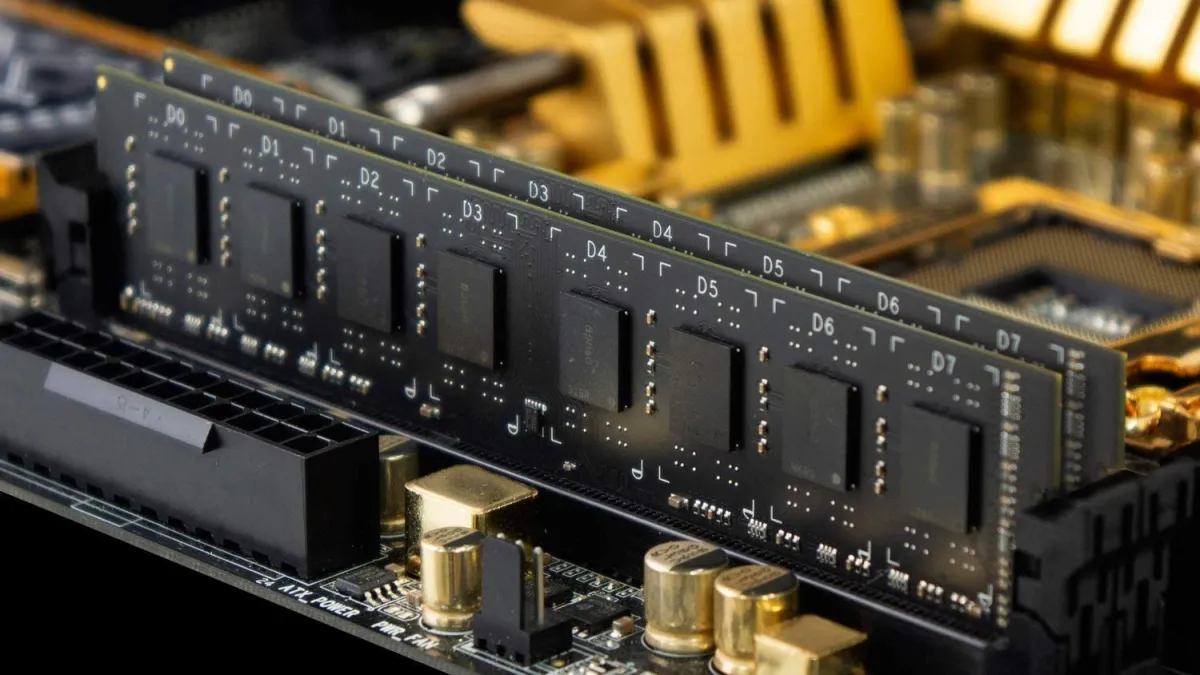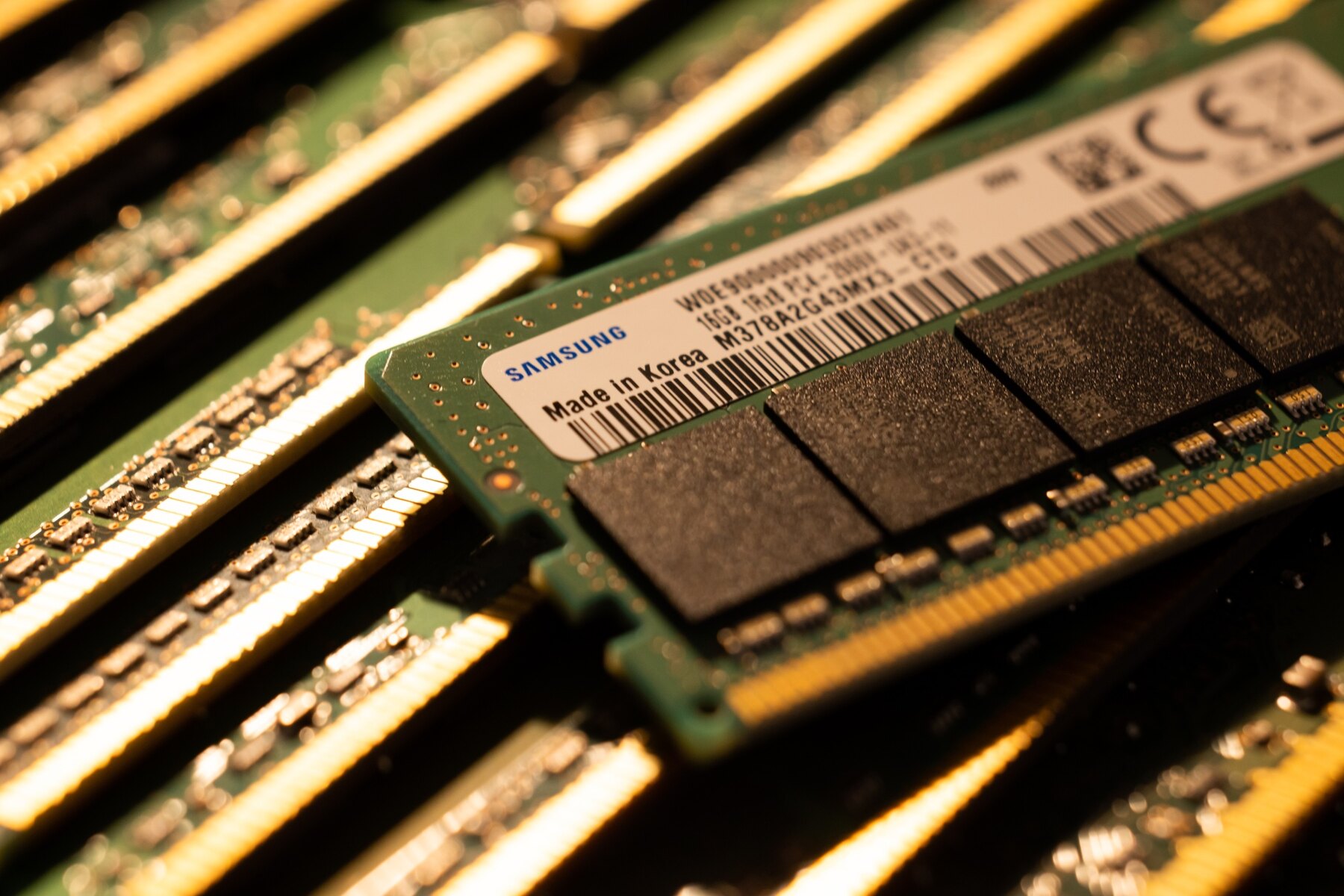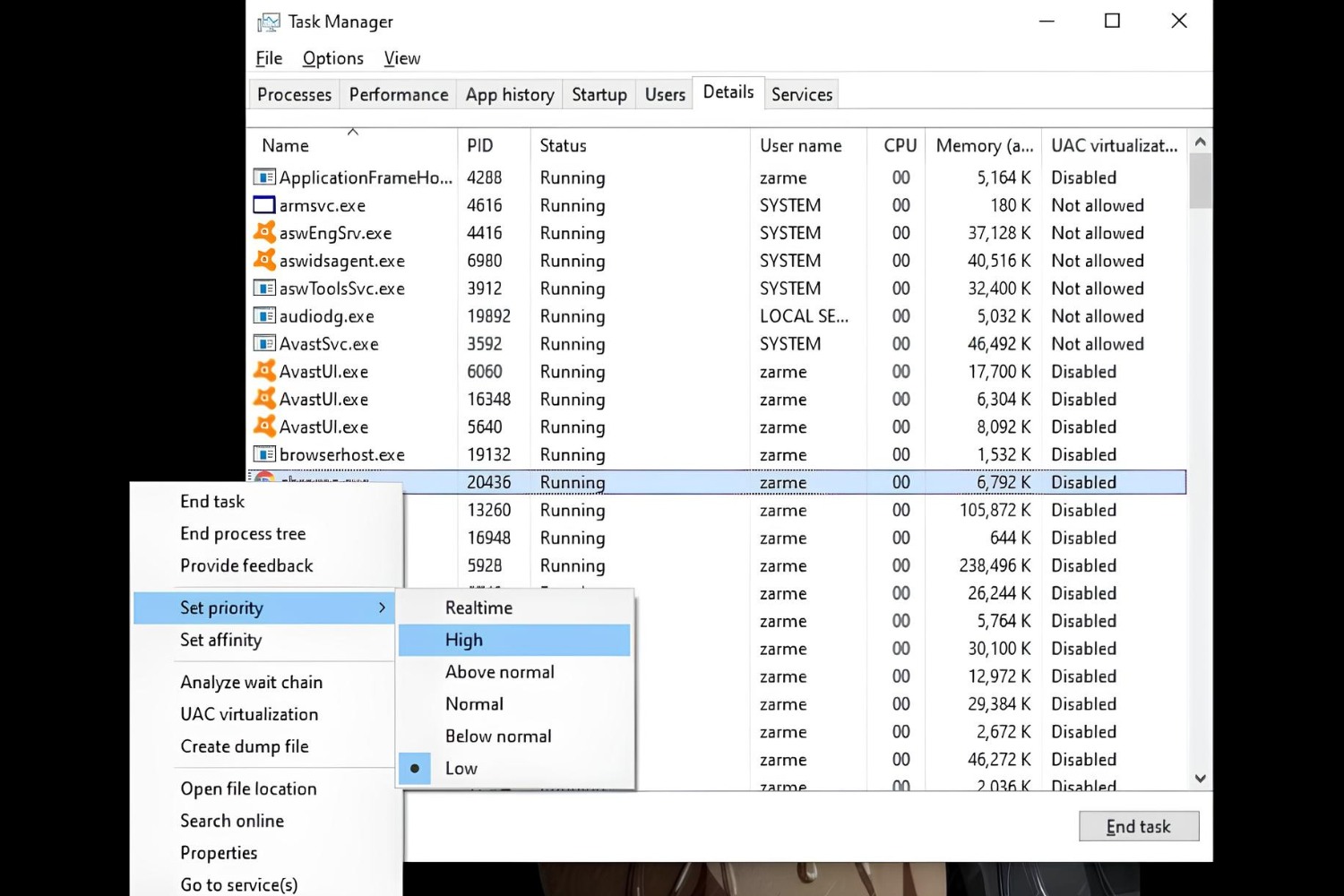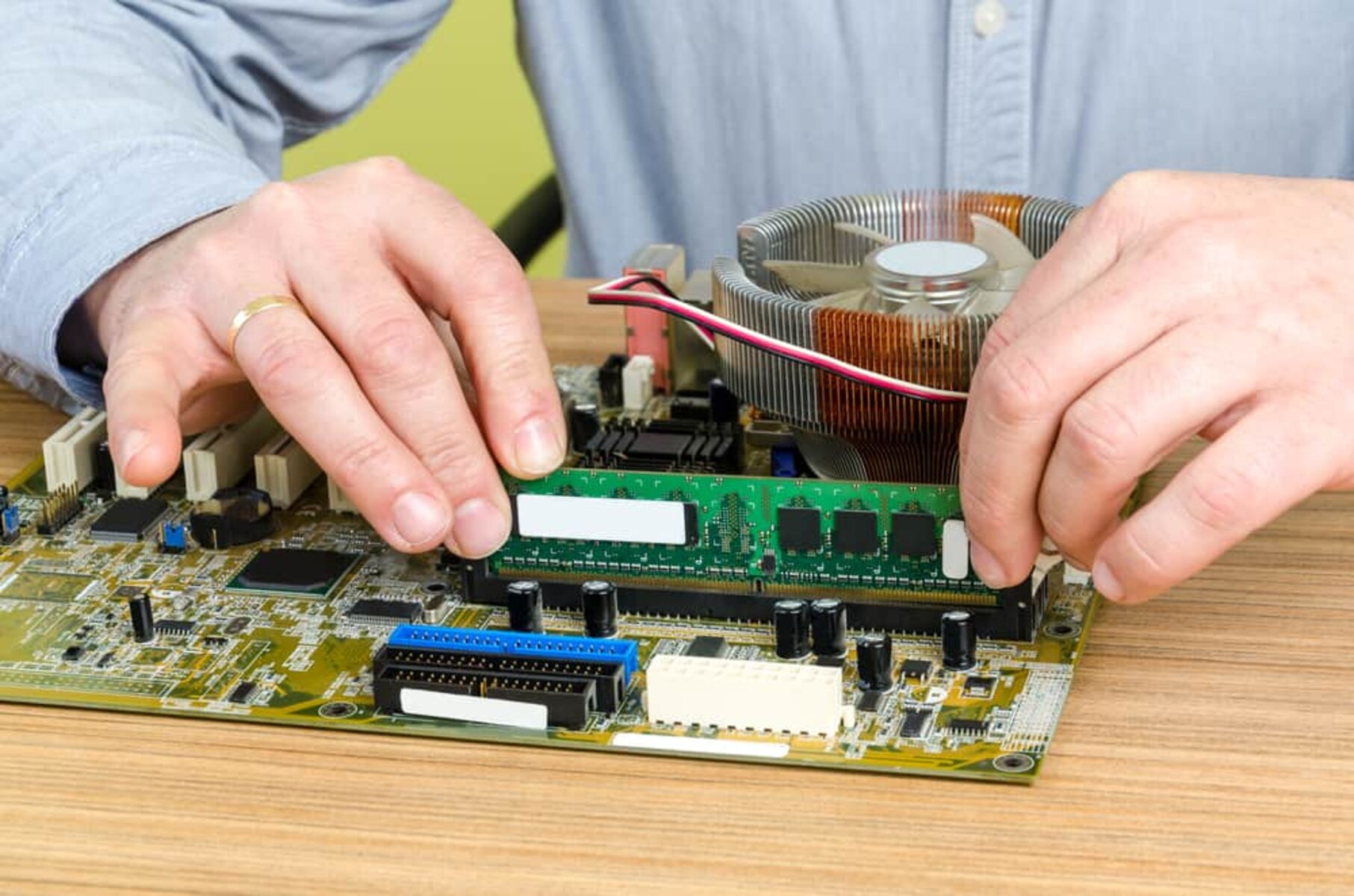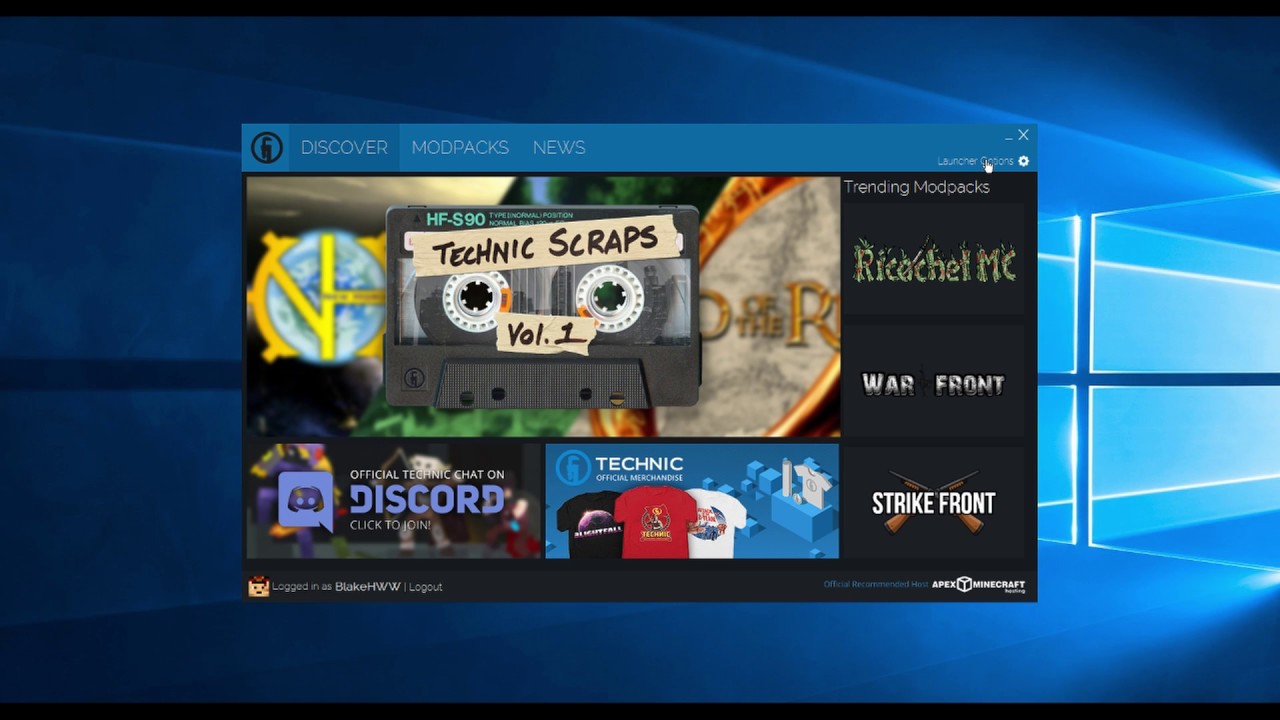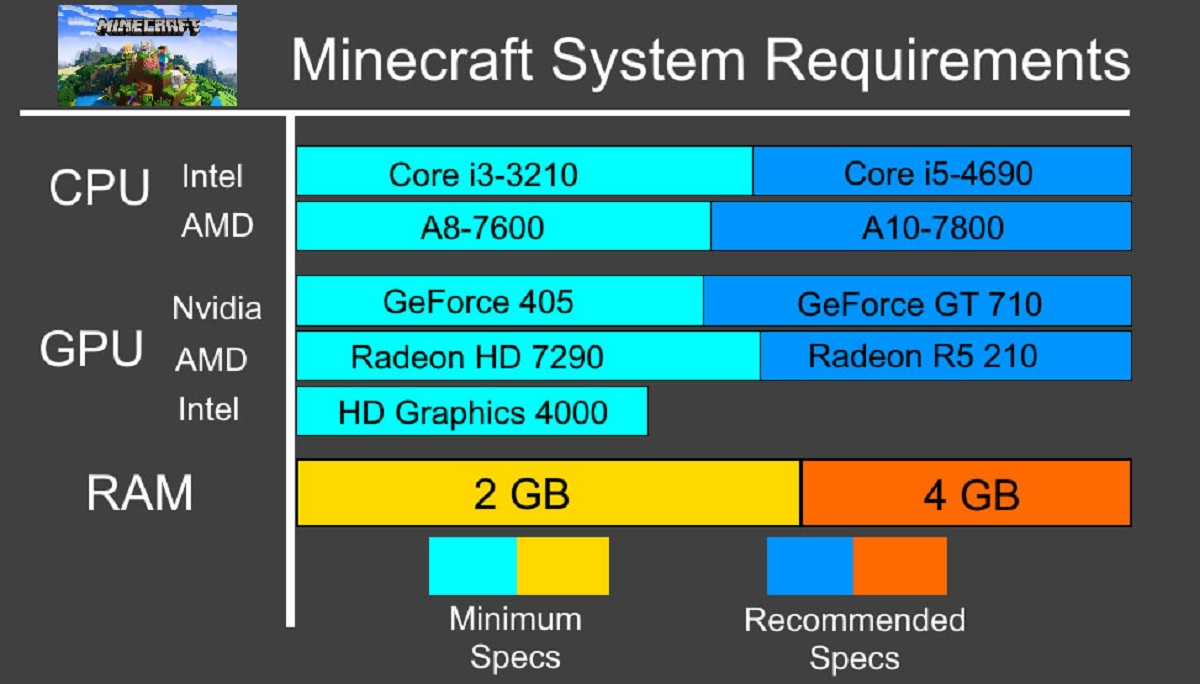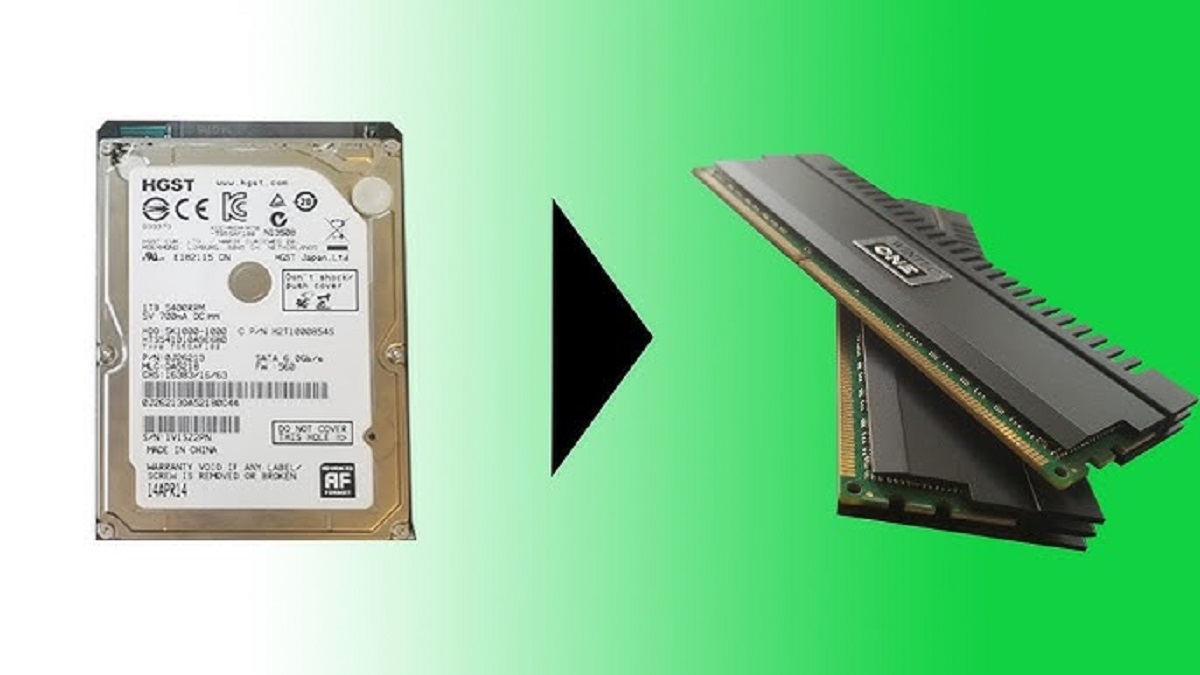Why is RAM allocation important?
RAM (Random Access Memory) allocation is a crucial aspect of computer performance optimization. It determines how much memory is assigned to different programs and processes running on your system. Proper RAM allocation is important for several reasons:
- Optimal performance: RAM acts as a fast storage space where applications and data are stored temporarily for quick access. When RAM is insufficiently allocated, it can lead to sluggish performance, frequent freezing, and crashes. By allocating the right amount of RAM, you ensure that your computer operates smoothly.
- Multi-tasking: With the increasing complexity of modern software, multitasking has become a common practice. Allocating sufficient RAM allows you to run multiple programs simultaneously without experiencing performance issues. Each program requires a certain amount of RAM to function efficiently, and allocating the right amount can prevent slowdowns and errors.
- Complex applications: RAM plays a critical role in handling resource-intensive applications such as video editing software, graphic design tools, and 3D rendering applications. These applications require a significant amount of memory to process large files and perform complex calculations. Allocating enough RAM ensures these applications can run smoothly without straining your system.
- Gaming: RAM allocation is especially vital for gamers. Modern games have demanding graphics, immersive audio, and complex AI systems that require a substantial amount of memory for optimal performance. Allocating enough RAM to the game ensures smooth gameplay, minimizes lag, and reduces loading times.
- Virtual machines: If you frequently use virtual machines to run different operating systems or complex software configurations, proper RAM allocation is crucial. Insufficient RAM allocation for virtual machines can lead to slow performance and system instability. Allocating enough RAM ensures that the virtual machines run efficiently and without hiccups.
Overall, RAM allocation is important for maintaining system stability, optimizing performance, and achieving a seamless computing experience. By allocating the right amount of RAM to different programs and processes, you can ensure that your system operates efficiently, even under heavy workloads and resource-intensive tasks.
How does RAM allocation affect performance?
RAM (Random Access Memory) allocation directly impacts the performance of your computer. The way RAM is allocated determines how efficiently programs and processes can access the necessary resources. Here’s how RAM allocation affects performance:
- Speed: RAM acts as a temporary storage space where data and instructions are stored for quick access. When programs and processes require data, they retrieve it from RAM instead of the slower hard drive. Insufficient RAM allocation can lead to frequent disk usage, causing delays in the retrieval of data and slowing down overall system speed.
- Smooth multitasking: Allocating sufficient RAM allows you to run multiple programs simultaneously without experiencing performance issues. When programs are allocated enough RAM, they can operate efficiently and perform tasks without slowing down other processes running on the system. Insufficient RAM allocation can result in CPU overload and cause programs to freeze or crash.
- Reduced disk thrashing: When RAM is insufficiently allocated, the computer compensates by using a technique called “disk thrashing.” This occurs when the system continuously swaps data between RAM and the hard drive to free up space. Disk thrashing can significantly slow down performance, as retrieving data from the hard drive is much slower than accessing it from RAM.
- Improved gaming performance: Games, especially modern ones with advanced graphics and complex algorithms, require a significant amount of RAM to run smoothly. Allocating enough RAM to a game allows it to load assets quickly, process animations smoothly, and minimize lag. Insufficient RAM allocation for gaming can result in choppy gameplay, long loading times, and overall unsatisfactory gaming experience.
- Resource-intensive applications: Software applications that rely on complex calculations, extensive data processing, or handling large file sizes benefit from proper RAM allocation. Resource-intensive applications such as video editing software, graphic design tools, and 3D rendering programs often require a substantial amount of RAM to perform efficiently. Insufficient RAM allocation for these applications can cause slow rendering times and system instability.
Proper RAM allocation is essential for maximizing system performance and ensuring smooth operation. By allocating an adequate amount of RAM to programs, you can prevent bottlenecks, minimize slowdowns, and optimize the overall performance of your computer.
How to check your current RAM allocation?
Before optimizing your RAM allocation, it’s important to know how much RAM is currently being used by your system and individual programs. Here are a few methods to check your current RAM allocation:
- Task Manager (Windows): On Windows systems, you can use the built-in Task Manager utility to check your RAM usage. Right-click on the taskbar and select “Task Manager” or press Ctrl+Shift+Esc to open Task Manager. In the “Performance” tab, you will find a section labeled “Memory” that displays the current RAM usage.
- Activity Monitor (macOS): If you’re using a macOS computer, you can utilize the Activity Monitor to check your RAM allocation. To access it, go to “Applications” > “Utilities” > “Activity Monitor” or use Spotlight search to find it. In the “Memory” tab, you’ll be able to see the current RAM usage, including the “Used” and “Free” memory.
- Command Line (Windows and Linux): Another method to check RAM allocation is by using command-line tools. On Windows, open the Command Prompt or PowerShell and run the command “wmic OS get FreePhysicalMemory” to see the amount of free RAM. In Linux, you can use the “free” command in the Terminal to display detailed information about memory usage.
- Third-party software: Various third-party software options are available for monitoring RAM usage. These software programs provide detailed information about RAM allocation, including usage by individual programs. Some popular options include CPU-Z, HWMonitor, and Speccy.
By checking your current RAM allocation, you can get an idea of how much memory is being used and whether any programs are consuming excessive resources. This information can help you identify any inefficiencies or issues in your RAM allocation and guide you in optimizing it for better system performance.
Determining how much RAM you need
When it comes to determining the amount of RAM you need for your computer, several factors come into play. The right amount of RAM depends on the specific tasks you perform and the type of software you use. Here are some considerations to help you determine how much RAM you need:
- Type of tasks: Consider the type of tasks you typically perform on your computer. If you mainly browse the web, use productivity software, and stream videos, 4-8 GB of RAM should generally suffice. However, if you engage in resource-intensive tasks like video editing, gaming, or running virtual machines, you’ll benefit from having 16 GB or more of RAM.
- Software requirements: Different software applications have varying RAM requirements. Check the recommended specifications provided by software developers to understand the RAM requirements for specific programs you use. This can help you determine the minimum and ideal RAM capacity needed to run those applications smoothly.
- Operating system: Consider the RAM requirements of your operating system. While 4 GB of RAM may be sufficient for older operating systems, newer versions such as Windows 10 or macOS Big Sur typically benefit from 8 GB or more for optimal performance. Keep in mind that the RAM allocation for the operating system is separate from the RAM allocated to individual programs.
- Multi-tasking: If you frequently have multiple programs running simultaneously or engage in heavy multitasking, allocating more RAM is beneficial. More RAM allows for smoother switching between applications, reduces the risk of slowdowns, and ensures better overall system performance.
- Future scalability: Consider your future needs when determining RAM requirements. As software applications become more demanding and your computing tasks evolve, it’s wise to have some headroom for future expansion. Investing in additional RAM now can save you from the hassle of upgrading later on.
While the above factors provide a general guideline, it’s essential to find the right balance between meeting your needs and considering budget constraints. Allocating more RAM than necessary may not offer significant performance benefits, while too little RAM may lead to sluggish performance. It’s recommended to consult the specific requirements of the software you use and consider your individual computing needs for an optimal RAM allocation.
Tips for optimizing RAM allocation
To optimize RAM allocation and ensure efficient usage of memory resources, consider implementing the following tips:
- Close unnecessary programs: Close programs that you’re not actively using to free up RAM. Running too many programs simultaneously can strain your system’s resources and lead to inefficient RAM allocation.
- Disable startup programs: Disable unnecessary programs from launching automatically at startup. These programs consume valuable RAM right from the start, even if you’re not using them immediately.
- Manage browser tabs and extensions: Keep the number of open browser tabs to a minimum, as each tab consumes RAM. Additionally, disable or remove unnecessary browser extensions that can contribute to memory usage.
- Monitor background processes: Keep an eye on background processes and services that may be consuming excessive RAM. Identify and close any unnecessary processes through the Task Manager (Windows) or Activity Monitor (macOS).
- Optimize virtual memory settings: Adjust the virtual memory settings, also known as the page file, to help balance the load on your RAM. By allowing the operating system to utilize a portion of your hard drive as additional virtual memory, you can prevent excessive RAM usage and improve overall system performance.
- Upgrade your RAM: If your computer still struggles with performance despite optimizing RAM allocation, consider upgrading your RAM. Increasing the total RAM capacity allows for smoother multitasking and better performance, especially for resource-intensive tasks and applications.
- Use lightweight alternatives: Consider using lightweight alternatives to resource-heavy software. For example, opt for lightweight text editors instead of full-featured word processors if you primarily deal with basic text editing.
- Keep your system updated: Regularly update your operating system and applications to take advantage of performance improvements and bug fixes. Updated software often includes optimizations that can help improve RAM allocation.
- Perform regular system maintenance: Periodically perform system maintenance tasks, such as disk cleanup, removing temporary files, and defragmenting your hard drive. These actions can free up space and improve overall system performance.
Implementing these tips can help optimize your RAM allocation, resulting in improved system performance, faster multitasking, and a smoother computing experience overall.
How to allocate more RAM to a specific program
If you have a specific program or application that requires more RAM to run smoothly, you can allocate additional memory to it. Here are the steps to allocate more RAM to a specific program:
- Close unnecessary programs: Before allocating more RAM to a specific program, close any unnecessary programs running in the background. This helps to free up resources and ensures that the allocated RAM is effectively utilized.
- Open the program’s settings: Launch the program for which you want to allocate more RAM and navigate to its settings or preferences menu. The location of the settings may vary depending on the software.
- Look for memory or performance settings: Within the program’s settings, look for options related to memory or performance settings. Some software applications have dedicated options to adjust the amount of RAM allocated to them.
- Adjust the RAM allocation: Within the memory or performance settings, you may find a slider or input field to adjust the RAM allocation. Increase the allocated amount of RAM as needed. Keep in mind that the available options may vary depending on the program.
- Save the changes: Once you have adjusted the RAM allocation according to your requirements, save the changes within the program’s settings.
It’s important to note that not all programs allow direct user control over RAM allocation. Some programs automatically manage RAM usage based on system resources and software requirements. In such cases, optimizing the overall system’s RAM allocation and following general optimization tips can help improve the performance of the desired program.
If you’re unable to find any specific memory-related settings within the program, you can try allocating more RAM to the entire system. This can be done through the operating system settings, which we will explore in the next sections for Windows, macOS, and Linux.
Allocating more RAM to a specific program can provide the necessary resources for resource-intensive tasks, enhancing performance and ensuring a smoother experience while using that program.
How to allocate RAM in Windows
Allocating RAM in Windows involves adjusting system settings to optimize memory allocation. Here’s how you can allocate RAM in Windows:
- Open the system configuration utility: Press the Windows key + R to open the Run dialog box. Type “msconfig” and press Enter to launch the System Configuration utility.
- Navigate to the Boot tab: In the System Configuration window, navigate to the “Boot” tab.
- Click on Advanced options: In the Boot tab, click on the “Advanced options” button.
- Enable maximum memory: In the Advanced Boot Options window, check the box next to “Maximum memory” and enter the desired amount of RAM you want to allocate. Note that the value should be entered in megabytes.
- Apply the changes: Click on the “OK” button to apply the changes and close the Advanced Boot Options window.
- Restart your computer: You will be prompted to restart your computer for the changes to take effect. Click on “OK” to restart your system.
After restarting your computer, Windows will allocate the specified amount of RAM to the system. It’s important to note that Windows may not allocate the entire specified amount if it exceeds the physical memory capacity of your system.
If you want to allocate more RAM to a specific program, follow the steps mentioned in the “How to allocate more RAM to a specific program” section. Adjust the RAM allocation within the program’s settings to allocate more memory specifically for that program.
By adjusting the system’s RAM allocation in Windows, you can optimize the usage of available memory and improve overall system performance, ensuring smoother multitasking and efficient operation of resource-intensive applications.
How to allocate RAM in macOS
Allocating RAM in macOS involves adjusting system settings to optimize memory allocation. Here’s how you can allocate RAM in macOS:
- Open System Preferences: Click on the Apple menu in the top-left corner of the screen and select “System Preferences” from the dropdown menu.
- Select the Energy Saver preference pane: In the System Preferences window, click on the “Energy Saver” preference pane.
- Click on the Battery tab: If you’re using a MacBook or MacBook Pro, make sure you’re in the “Battery” tab of the Energy Saver preference pane.
- Adjust the slider: Move the “Better performance” slider towards the right to allocate more RAM for improved performance. Moving the slider further to the right will allocate more RAM for applications, but it may also impact battery life.
- Click on the Power Adapter tab: If your Mac is connected to a power adapter, switch to the “Power Adapter” tab in the Energy Saver preference pane.
- Adjust the slider: Similar to the previous step, move the “Better performance” slider towards the right to allocate more RAM when your Mac is connected to a power adapter.
- Close System Preferences: Once you have adjusted the RAM allocation settings, close the System Preferences window.
After adjusting the RAM allocation settings in macOS, the system will allocate the specified amount of memory accordingly. It’s important to note that macOS dynamically manages memory allocation based on system resources and software requirements. Therefore, it may not allocate the full amount of RAM specified if it exceeds the physical memory capacity of your system.
If you want to allocate more RAM to a specific program, follow the steps mentioned in the “How to allocate more RAM to a specific program” section. Adjust the RAM allocation within the program’s settings to allocate more memory specifically for that program.
By optimizing the RAM allocation settings in macOS, you can enhance performance, ensure smoother multitasking, and efficiently run resource-intensive applications on your Mac.
How to allocate RAM in Linux
Allocating RAM in Linux involves modifying system settings to optimize memory allocation. Here’s how you can allocate RAM in Linux:
- Open the terminal: Launch the terminal by pressing Ctrl+Alt+T or searching for “Terminal” in the applications menu.
- Check current RAM allocation: In the terminal, run the command
free -mto check the current RAM allocation. Note down the available free memory and total memory to guide your allocation requirements. - Edit the GRUB configuration file: To allocate more RAM during the boot process, open the GRUB configuration file in a text editor. Run the command
sudo nano /etc/default/grubto open the file in the nano editor. - Adjust GRUB parameters: Locate the line that starts with
GRUB_CMDLINE_LINUX_DEFAULTand addmem=XXXXMto the parameters, where XXXX is the desired amount of RAM in megabytes. For example, to allocate 4GB of RAM, addmem=4096M. - Update GRUB: Save the changes to the GRUB configuration file and exit the text editor. Update the GRUB configuration by running the command
sudo update-grubin the terminal. - Reboot your system: Restart your Linux system for the changes to take effect. During the boot process, Linux will allocate the specified amount of RAM according to your configuration.
After the system boots up, you can monitor the RAM allocation using tools like htop or the free -m command in the terminal.
If you want to allocate more RAM to a specific program, follow the steps mentioned in the “How to allocate more RAM to a specific program” section. Adjust the RAM allocation within the program’s settings to allocate more memory specifically for that program.
By adjusting the RAM allocation in Linux, you can optimize system performance, enhance multitasking capabilities, and efficiently run memory-intensive applications on your Linux system.
Best practices for managing RAM allocation
Properly managing RAM allocation is essential for optimizing system performance and ensuring efficient resource utilization. Implementing the following best practices can help you effectively manage RAM allocation:
- Monitor resource usage: Keep an eye on your system’s resource usage, including RAM. Regularly monitor the amount of RAM being consumed by different applications and processes to identify any resource-hungry programs or potential memory leaks.
- Close unnecessary programs: Close programs that are not in use to free up valuable RAM. By reducing the number of active programs, you can optimize available resources and ensure smoother performance.
- Prioritize essential tasks: Allocate more RAM to programs and processes that are essential for your current tasks. This way, you can ensure that the most critical applications receive adequate resources for optimal performance.
- Optimize virtual memory: Configure virtual memory settings to help manage RAM allocation effectively. Adjust the virtual memory size to balance the load on RAM and the hard drive, preventing excessive RAM usage and improving overall system performance.
- Regularly update software: Keep your operating system and applications up to date. Updates often include performance improvements and bug fixes that can help optimize RAM usage and enhance overall system stability.
- Consider upgrading your RAM: If your system consistently runs out of memory or struggles with performance, upgrading your RAM can be a viable solution. Increasing the total RAM capacity allows for smoother multitasking and accommodates resource-intensive tasks and applications.
- Manage startup programs: Limit the number of programs that launch automatically at system startup. By disabling unnecessary startup programs, you reduce the amount of RAM consumed right from the boot process, leaving more resources available for other tasks.
- Use lightweight alternatives: Consider using lightweight applications instead of resource-heavy ones if they meet your needs. Lightweight alternatives can help conserve RAM, improving overall system performance and responsiveness.
- Regularly clean up your system: Perform routine maintenance tasks like deleting temporary files, clearing caches, and removing unnecessary files. By freeing up disk space and optimizing your system, you indirectly help manage RAM allocation more efficiently.
- Optimize your workflow: Streamline your workflow to minimize the number of programs and processes running simultaneously. By focusing on one task at a time and closing unnecessary applications, you can reduce memory pressure and allocate the available RAM more effectively.
By following these best practices for managing RAM allocation, you can ensure that your system maximizes available resources, delivers optimal performance, and provides a smooth computing experience.
Conclusion
Effective RAM allocation plays a crucial role in optimizing system performance and ensuring smooth operation. By understanding the importance of RAM allocation, how it affects performance, and the methods for managing it, you can enhance your computing experience.
Through this article, we have explored why RAM allocation is important, including its impact on system performance, multitasking capabilities, and resource-intensive applications. We discussed various methods to check current RAM allocation, determine the amount of RAM needed based on specific requirements, and provided tips for optimizing RAM allocation.
In addition, we covered how to allocate more RAM to a specific program in Windows, macOS, and Linux, enabling you to allocate resources where they are most needed. We also touched upon best practices for managing RAM allocation, such as monitoring resource usage, managing startup programs, and considering hardware upgrades.
Remember, proper RAM allocation is an ongoing process that requires monitoring and adjustments based on your computing needs. By following the best practices outlined in this article, you can optimize RAM usage, minimize bottlenecks, and enjoy a faster, more efficient computing experience.
Make sure to regularly monitor RAM usage, close unnecessary programs, and stay updated with the latest software and operating system updates. By managing RAM allocation effectively, you can unlock the full potential of your computer and ensure optimal performance for all your tasks and applications.







